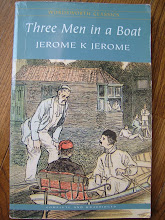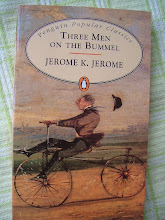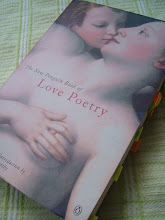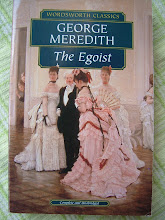 It is very obvious that the female protagonists portrayed by Nathaniel Hawthorne(1804-1864) in The Blithedale Romance (1852) are a kind of significant comparison. Despite sharing the same father, Zenobia and Priscilla are completely different in their outlook and appearances, such as the dresses they wear, the accessories Zenobia uses, the way they speak, their behavior, way of thinking and other aspects. The first has inherited her uncle’s wealth by his sudden death, therefore she is always dressed elegantly, full of self-confidence, embracing feminist thoughts, the star in the public’s eyes; while the latter is no more than a seamstress who cannot afford to live in luxury, she doesn’t have her own thought but depends upon another’s order; the ghostly and timid character makes her even invisible if she is staying quietly in the corner.
It is very obvious that the female protagonists portrayed by Nathaniel Hawthorne(1804-1864) in The Blithedale Romance (1852) are a kind of significant comparison. Despite sharing the same father, Zenobia and Priscilla are completely different in their outlook and appearances, such as the dresses they wear, the accessories Zenobia uses, the way they speak, their behavior, way of thinking and other aspects. The first has inherited her uncle’s wealth by his sudden death, therefore she is always dressed elegantly, full of self-confidence, embracing feminist thoughts, the star in the public’s eyes; while the latter is no more than a seamstress who cannot afford to live in luxury, she doesn’t have her own thought but depends upon another’s order; the ghostly and timid character makes her even invisible if she is staying quietly in the corner.Since Zenobia was brought up till girlhood by her rich uncle, “she grew up in affluence, with native graces clustering luxuriantly about her” (p.189) while Priscilla was brought up in poverty by her father old Moodie, and “grew up so pallid and so slender, and with much unaccountable nervousness, and all the weakness of neglected infancy still haunting her” (p.186). Perhaps how they were brought up is the fundamental reason for their difference in those aspects above mentioned.
Of course it might be also due to the story itself that this kind of arrangement was made by the author, but these two women are perhaps the only female protagonists in the The Blithedale Romance, therefore to make a full use of these two characters, probably there is a need to enlarge the gap between the two so that it can create a kind of impact on readers.
As we know, Zenobia is portrayed according to the image of the feminist writer, Margaret Fuller, a leading intellectual of 19th century America. As a writer, Fuller was admired as a literary critic and for her sympathies for the condition of the Native Americans. Her writings covered such themes as transcendentalism, women's rights, critical theory, gender roles, and political reform in Europe. Although she has been identified as Zenobia in Hawthorne’s Blithedale Romance, she was never in sympathy with the Brook Farm experiment upon which the book is based.[1] In 1850, while sailing to the United States, Fuller was drowned with her husband and infant son when the ship was wrecked off Fire Island, New York. 40-year-old Fuller’s life was ended in the sea, regardless of the ambiguity as to whether Zenobia was murdered or committed suicide; her young life is finally ended in a river.
From the argument of Zenobia regarding the feminist thoughts in chapter 14, Eliot’s Pulpit, it is very obvious that there are some similarities between Zenobia and Fuller. But unfortunately no matter how much Zenobia emphasizes her feminist thoughts that Hollingsworth disagrees with, and finally lets go of him and Priscilla, and tries to accept the fact that Hollingsworth loves Priscilla more than her (in fact he was only using her to provide him with the financial support for his unpractical program of reforming the criminals), if the fact is that she really committed suicide by drowning herself in a river, perhaps she can be described as an incomplete feminist who cannot be able to hold on to her thoughts till the end but defeated is by her own emotions because she cannot bear the sadness that Hollingsworth leaves her for Priscilla.
On the other hand, Priscilla who is controlled by others doesn’t have an explicit and strong thought about feminism and the fate of women (which should not be controlled by men but by women themselves), she was let go by Zenobia, her half sister and allowed to be together with the man (Hollingsworth) who claims to love her no matter whether he loves her truly or not. In fact two men, Hollingsworth and Coverdale himself, who realizes it in the end, love her at the same time. The proud, clever and dazzling Zenobia ended her life with a tragedy; while the vulnerable, plain and pallid Priscilla may have a chance to spend the rest of her life with someone who loves her, truly or not.
Zenobia’s feminist thought doesn’t help her in winning the affection of Hollingsworth, even though Coverdale agrees with her thoughts. I believe both Hollingsworth and Coverdale do embrace some affection towards her, but no matter how appealing she is, she is finally “defeated” by the poor Priscilla in winning those men’s love. Zenobia has all the advantages that make her superior in all circumstances, but unfortunately she is facing the men who are more attracted to a weak creature without realizing it themselves, especially Coverdale. Coverdale maybe attracted to Zenobia for her inner character or appearance, but he loves Priscilla maybe due to his eagerness to correct the moral problems of others and protecting the weak people, while in the story it seems as if Priscilla and he are the only two who are flawless, and Coverdale may come to think that Priscilla is always used and controlled by others and needs to be protected by him.
By embracing this kind of thought he himself also overlooks the fact that he falls in love with her during the process or while they spend their days in Brook Farm. Even Coverdale describes the scenes where Hollingsworth and Priscilla are together in a calm way, but as he says in the last chapter, he himself as the narrator also doubts his own words, therefore if it is true that those scenes really do happen, he may ignore his jealousy towards Hollingsworth because Priscilla seems to like to be together with Hollingsworth but she treats Coverdale coldly. The narration by Coverdale is no doubt very weird when he comes to describe some scenes. There is not too much reaction from him and Hollingsworth when they found that Zenobia was drowned in the lake. Foster is the one who reacted, as they should when they found her dead body.
Failure is not only inevitable in the program of Brook Farm to create a utopian community because not only the program itself is unpractical, but also the members themselves have their own hidden intentions. Even though there is no clear description about the future scene of those protagonists; failure is also unavoidable in the relations of these men and women in which it finally ended in tragedy. The circle between these men and women is the point of romance that I find in The Blithedale Romance. Perhaps this is the romance in a romantic and unrealized utopian community. Even though there is not much description regarding the love story between those men and women, the way of narration, or perhaps shall I say the analogy of something or some happenings is really beautiful. Despite the uncertainty as to whether the narrator can be trusted or not, the whole story is like a daydream in which it is really difficult to distinguish between truth and falsehood, reality and imagination. Maybe it is this quality of ambiguity that makes the novel a kind of itself.


Nathaniel Hawthorne in 1840 and 1860s.
[1] The Columbia Encyclopedia, Sixth Edition, 2001.
Text based on The Blithedale Romance, Oxford World’s Classics, 1998.
(Written on February 12, 2004 for Seminar on Studies of Fiction in English: The Blithedale Romance)







